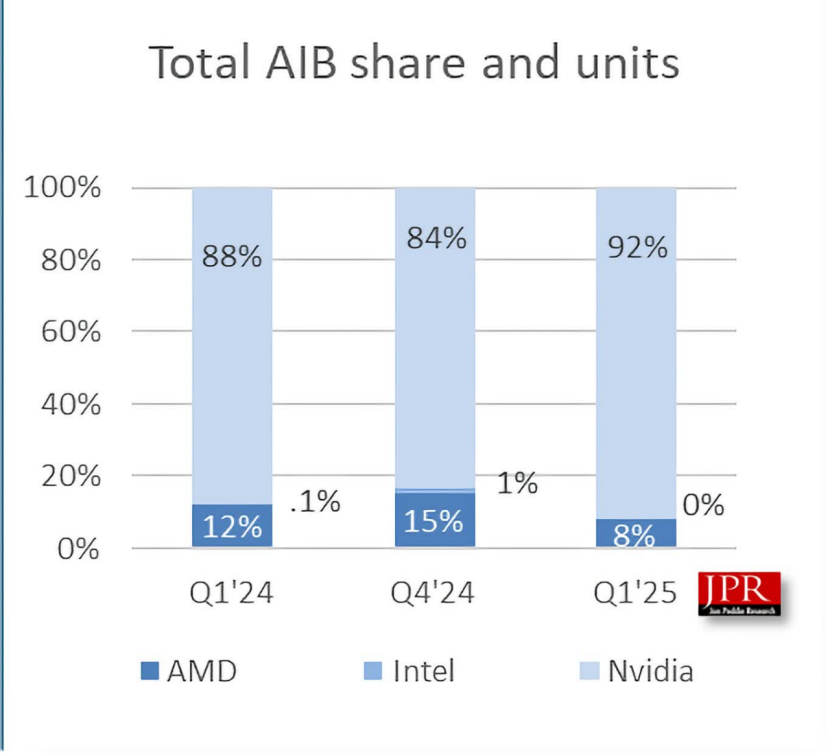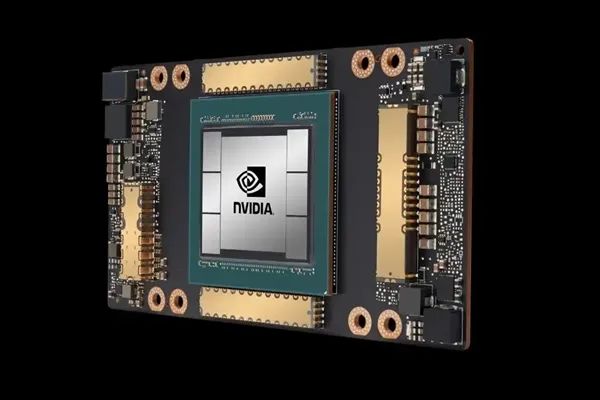The GeForce 50 series was initially expected to be Nvidia's worst-performing product ever. However, despite facing more affordable competitors, supply chain issues, and widespread criticism, Nvidia's latest graphics card series has achieved an unprecedented market dominance (regardless of its impact on the AI field).
According to data from Jon Peddie Research, total sales of dedicated desktop graphics cards reached 9.2 million units in the first quarter of 2025, with year-over-year and quarter-over-quarter growth rates of more than 8%. Despite the launch of new GPU product lines by Nvidia and AMD during this period, Nvidia's market revenue far exceeded expectations.
Specifically, NVIDIA sold millions of RTX 50 series GPUs from January to March, while AMD shipped fewer than 750,000 units of its Radeon 9000 series. This led to NVIDIA's market share soaring to a historic 92%, while AMD's fell to an all-time low of 8%. Intel found it nearly impossible to gain any market share. Jon Peddie noted that AMD's insufficient production capacity was the primary reason for the significant disparity in their market performance.

While AMD revealed in March that the RX 9070 and 9070 XT graphics cards had seen "unprecedented" demand, the surge has clearly exceeded expectations, and AMD is now gearing up resources and ramping up production to cope with the surge in orders.
AMD faces a tricky problem —— how to balance the allocation of TSMC's semiconductor capacity between the Radeon GPU and the Ryzen 9000 CPU. Both products have received strong market response, and demand continues to outstrip supply.
On the Nvidia side, we found in many online product reviews that the performance improvement of the RTX 50 series GPU is significantly narrower than that of the RTX 40 Super series. Although some graphics cards recently launched have been described as "lacking highlights," their dominance in the GPU market has been further strengthened.

NVIDIA also announced a new generation of its Rubin GPU and Vera CPU.
According to supply chain sources, NVIDIA's new generation of AI chips, the Rubin GPU and Vera CPU, will be finalized in June (tape-out) and samples will be available to customers as early as September.
The Rubin GPU uses TSMC's third-generation 3nm (N3P) process and CoWoS-L advanced packaging technology to support 8 layers of HBM4 high-bandwidth storage for the first time, with mass production scheduled for early 2026.
Another key breakthrough for the Rubin platform is the co-design of a CPU code-named "Vera". Vera CPU will be launched at the same time as the Rubin GPU, and the two will be integrated into the Vera Rubin superchip, which is expected to replace the existing Grace Hopper superchip.

In addition to the memory and CPU upgrades, Rubin will also be equipped with a new generation of NVLink 6 Switch and CX9 SuperNIC components. The former provides connection speeds up to 3600 GB/s, while the latter provides transmission speeds up to 1600 GB/s, ensuring efficient data transfer.
Interestingly, the name of NVIDIA's new generation of AI chips comes from astronomer Vera Rubin.





















.png)
